Two popular AR-style rifles are put to the test. We’re looking at a standard AP4 Carbine and Lite 16-A3 from DPMS today, in a side-by-side comparison.
A Rare Side-By-Side Test
I receive requests all the time from many of our readers to do a side-by-side test of various firearms. I rarely do these types of articles for one very good reason– no matter how fair I try to be, or unbiased, human nature takes over, and I’ll like one firearm better than the other. I could test a 1911 .45ACP from the XYZ company and a version of the same gun from the ABC company, and in the end no matter how fair of a test I might do I’ll end up picking one 1911 over the other. They might perform equally in my testing, too. So, with this in mind, you’ll rarely see me testing one gun against another.
The Main Difference– The Barrel
One of our readers suggested I test two AR-15 style rifles from the same company against one another, with the main difference being that one has a standard M4 style barrel with the “step” and the other having a “pencil” barrel, meaning it is skinny. The stocks are different, too. One has a standard M4 style telescoping stock; the other has a telescoping stock that only DPMS manufactures. Both guns have a 16” Bbl, and both are made by DPMS www.dpmsinc.com. Their stock/inventory is always changing with new and improved versions. Both guns were equipped with a removable carry handle “iron” sight, and both had an M- oval shaped handguard. They both had a flash suppressor as well.
DPMS AR-15 Style Rifles/Carbines
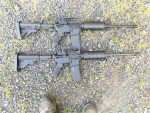 Over the years, I’ve owned quite a few DPMS AR-15 style rifles/carbines. They are great guns for the money. Both samples I used for this article have forged aluminum upper and lower receivers. The barrel twist is 1:9, and that is one of the most popular twists for the two major bullet weights– 55-gr or 62-gr. The Lite 16-A3 weighed in at 6.0 lbs even and the AP4 Carbine was 7.15 lbs, which is not a huge difference. Both guns are chambered in 5.56mm and can also shoot .223 Remington ammo. Be advised that the two rounds are not the same. The 5.56mm is slightly hotter and used by the U.S. military, and the .223 Remington is running a little bit slower in velocity.
Over the years, I’ve owned quite a few DPMS AR-15 style rifles/carbines. They are great guns for the money. Both samples I used for this article have forged aluminum upper and lower receivers. The barrel twist is 1:9, and that is one of the most popular twists for the two major bullet weights– 55-gr or 62-gr. The Lite 16-A3 weighed in at 6.0 lbs even and the AP4 Carbine was 7.15 lbs, which is not a huge difference. Both guns are chambered in 5.56mm and can also shoot .223 Remington ammo. Be advised that the two rounds are not the same. The 5.56mm is slightly hotter and used by the U.S. military, and the .223 Remington is running a little bit slower in velocity.
Pencil Barreled ARs
I’ve always steered clear of “pencil” barreled ARs for a couple of reasons. Number one is, that they heat up faster, and as a barrel gets hot your accuracy falls off. Plus, I just never cared for the look of the pencil barrel; instead the M-4 military style barrel just has more eye appeal, to my way of thinking. If forced into a survival situation, or some sort of limited combat, I believe the heavier M-4 barrel would serve me much better, because it is heavier and won’t heat up as fast, losing accuracy.
A Thousand Rounds of Black Hills Ammo for Testing
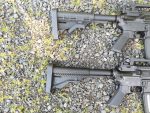 Jeff & Kristi Hoffman, who own Black Hills Ammunition, sent me 1,000 rounds of their new but factory seconds 55-gr .223 Rem ammo for testing these two guns. As always, when there is free ammo I have more than a few volunteers who are ready to send lead down range. Keep in mind that this wasn’t a truly scientific test of the two guns performance in a side-by-side shooting test. However, I believe the test was a good indication of the performance of the two guns.
Jeff & Kristi Hoffman, who own Black Hills Ammunition, sent me 1,000 rounds of their new but factory seconds 55-gr .223 Rem ammo for testing these two guns. As always, when there is free ammo I have more than a few volunteers who are ready to send lead down range. Keep in mind that this wasn’t a truly scientific test of the two guns performance in a side-by-side shooting test. However, I believe the test was a good indication of the performance of the two guns.
Accuracy Testing
We didn’t need to test the accuracy of the two DPMS rifles at a great distance, so we decided that 75 yards was a fair distance for our intended purposes, using the open sights. I had zeroes both guns previously, and we started out with both guns cleaned and lubed, too. We each took turns, firing both guns for accuracy at 75 yards, testing them over the hood of my Chevy Avalanche on a rolled-up sleeping bag as a rest. If we all did our part, we were getting groups that hovered right around 1.75 inches. That’s not bad for open sights. I know the guns will do better with a magnifying scope mounted on them.
So, at 75 yards, without a lot of effort, both guns are capable of shooting 1.75 inches on average. Some groups were smaller, depending on the shooter’s abilities and concentration, and some were slightly larger. Again, we used the open sights. Each gun fired 500 rounds of ammo, so this part of the test was equal. Neither gun had any malfunctions in our testing.
Our Process for Testing
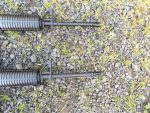 Here is what we did as our process. We would fire a 30-rd magazine through one DPMS as fast as we could pull the trigger, and then fire a 30-rd magazine through the other gun. Once again, we fired as fast as we could pull the trigger. Then we did it again and again. So, in short order, 90 rounds were fired through each gun, rapid-fire. And, we then would fire five rounds for accuracy through each gun and measure the groups. We rotated which gun was fired first for accuracy, so both guns were treated as fairly as we could.
Here is what we did as our process. We would fire a 30-rd magazine through one DPMS as fast as we could pull the trigger, and then fire a 30-rd magazine through the other gun. Once again, we fired as fast as we could pull the trigger. Then we did it again and again. So, in short order, 90 rounds were fired through each gun, rapid-fire. And, we then would fire five rounds for accuracy through each gun and measure the groups. We rotated which gun was fired first for accuracy, so both guns were treated as fairly as we could.
Enough to Heat Up the Barrel
Now, if you don’t believe 90 rounds through a semi-auto AR is enough to heat up the barrel, you are dead wrong. You will easily burn your hand if you touch the barrel after 90 rounds. The barrels were smoking hot on both guns, literally! We each took turns following the above procedure, until all the ammo was shot up in very short order, and with several shooters firing as fast as they could. Believe me, your trigger finger gets tired firing rapid-fire with a semi-auto. If you don’t believe this, you are mistaken. It is more work than you think it is!
Hot Barrels at End of Testing
Here is what we discovered in our testing. As already mentioned, your trigger finger gets tired firing three 30-rd mags as fast as you can pull the trigger through one gun and then the other. Then there’s the alternating rifles, concentration, trying to fire five rounds for accuracy after the rapid-fire testing. All this really made us hunker down in order to wring out the most accuracy we could. And, at the end of our testing, both guns had extremely hot barrels, way too hot to touch. In fact, it took better than half an hour for the barrels to cool down enough in order to touch them without getting our hands or fingers burned.
Yards
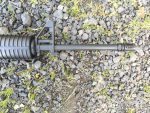 We could have moved the targets out to 100 yards, but we thought it would really strain our concentration on shooting that far out with the open sights in order to get the smallest groups we could. So, we all agreed that 75 yards was far enough for us to test for accuracy. When we rapid-fired, we didn’t aim at any targets. We just sent the rounds down-range in order to burn through three magazines in each gun, until the ammo was exhausted.
We could have moved the targets out to 100 yards, but we thought it would really strain our concentration on shooting that far out with the open sights in order to get the smallest groups we could. So, we all agreed that 75 yards was far enough for us to test for accuracy. When we rapid-fired, we didn’t aim at any targets. We just sent the rounds down-range in order to burn through three magazines in each gun, until the ammo was exhausted.
Groups
As both guns heated-up, the groups we fired opened-up but not as much as you think. We could still keep five-shot groups down to two inches, with both guns. We were more than a little surprised that the pencil– skinny– barreled DPMS sample held its own against the heavier M-4 style barrel in the accuracy department. Honestly, the difference in group sizes weren’t anything to complain about. Both guns held their groups down to about two-inches when the barrels heated up, and heat up they did in very short order. If I were a betting man, I would have bet that the pencil barreled Lite 16-A3 would have had much bigger groups. But that wasn’t the case at all.
I believe that the pencil barreled DPMS got a little bit hotter than the M-4 version. However, we didn’t have a way of measuring the heat, other than recognizing that both barrels were smoking hot, very hot.
What We Concluded After 1,000 Rounds of .223 Ammo
So, where did this all lead us to conclude after burning through 1,000 rounds of .223 ammo. (And to be sure, Black Hills factory seconds are brand new ammo; they just might have some dings or discolored brass. With many of the rounds, you can’t see any imperfections. But the folks at Black Hills hand inspect each round before it is packaged, and they can catch the smallest imperfection. Those rounds are classified as factory seconds.) It just breaks my heart to burn through that much ammo, in such a short time. However, we all had fun doing it. At least the fun-factor was there.
DPMS Pencil Barreled Lite 16-A3
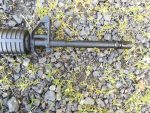 I’m past the middle of my 6th decade these days. I just don’t see myself returning to military service, not with all my old age aches and pains and complaints, plus the several surgeries I’ve had over the years. So, I’m not concerned that I will get involved in one firefight after another after another. If that were the case, I would probably feel a little bit more comfortable with the DPMS AP4 Carbine, with its slightly heavier stepped barrel. However, since I don’t see myself getting involved in fire fights on a daily basis, not even in a hard-core survival or SHTF situation, the DPMS pencil barreled Lite 16-A3 would suit my needs.
I’m past the middle of my 6th decade these days. I just don’t see myself returning to military service, not with all my old age aches and pains and complaints, plus the several surgeries I’ve had over the years. So, I’m not concerned that I will get involved in one firefight after another after another. If that were the case, I would probably feel a little bit more comfortable with the DPMS AP4 Carbine, with its slightly heavier stepped barrel. However, since I don’t see myself getting involved in fire fights on a daily basis, not even in a hard-core survival or SHTF situation, the DPMS pencil barreled Lite 16-A3 would suit my needs.
Cost/Money Factor
There isn’t a huge difference in costs between the Lite 16-A3 and the AP4 Carbine. If cost isn’t a deal-breaker, I’d still elect to go with the slightly heavier barreled AR-4 Carbine. If money is a factor and funds are tight, you can’t go wrong with the Lite 16A3 pencil barreled version.
Make Every Round Count
If you find yourself involved in a serious firefight and you are burning through three 30-rd mags in a matter of a minute or two, I’m thinking that you might be better served with a light machine gun, seriously! Remember, as civilians, we are limited by the amount of ammo we can carry. We don’t have the luxury of an air-drop resupply, either. We will have to make every round count, and we are responsible for each round we might fire. Keep this in mind.
A Nice Surprise
We were all more than a little surprised that the pencil barreled DPMS held its own against the heavier M-4 stepped barrel. It was a nice surprise, too.

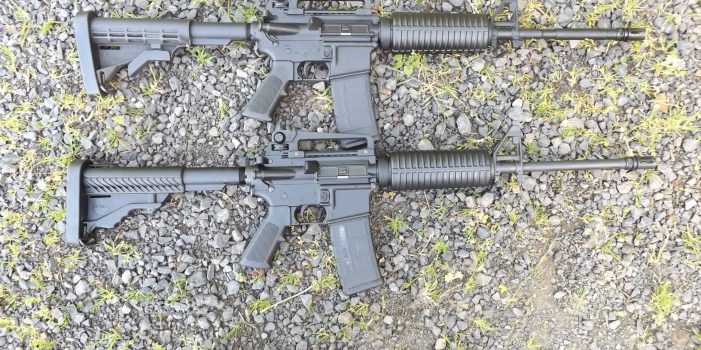









Pat:
What is the weight difference between the pencil and standard barrels?
1.15 pounds.
Your answer is in the third paragraph of the article
Walt:
That is the weight difference between two different guns with two different barrels. It is NOT the weight of the barrels…
What difference would that make? You carry the whole rifle, not just the barrel.
that wasn’t a true pencil thickness barrel. just the standard m4 and m4 heavy barrel. the pencil is even smaller, the entire ,front half to the end.
the standard m4 is relief cut, just to cut a little weight. i think the heavyies look a bit better an remove some of the verticle poppyness, keepin g your longer range groups better.
you can still ring the plates out at 300, but you need a softer rest and bury the forearm into a bag, and focus a little more on the basic funddamentals.
my next build will be a heavy barrel 1:7 or 1:8, the 1:9’s just don’t stabilize enough on 55grns, to be considered tack drivers.
good article.
You can carry one extra 30 round mag for the pound difference in weight.
Wish they’d bring back the Avalanche. Got over 500k miles before my last one went away.
Great article. Thank you for the information.
“We could have moved the targets out to 100 yards, but we thought it would really strain our concentration on shooting that far out…”
From the guy that was shooting 10″ rocks at 100 yards with a 5″ 9mm AR with an unmagnified red dot?
Just got my first ar, keep up the good work.
How do you feel about both firearms using a bump stock? Would they hold up on rapid burst? Thanks for any opinion.
just get a good2 stage trigger. you don’t need it a bump stock.
a good trigger will run just as fast as a single stage, but more accurate. you can even just polish, your single stage, to make i t better. 2-3-4 shots beat a dump.
you even have the option of a drop in binary trigger.
geisels are pricy , but his wife makes ALS triggers, with the geisel rejects, still a good trigger.
i would just clean up and polish my factory. you can put some padding, so you don’t hit your mag, with the hammer. run some 550 under the hammer and pull up, to give some tension , on the hammer. , pull the trigger , reset and repeat. this mates the 2 surfaces.
Very good article enjoyed reading it. I own a model 15 and enjoy shotting it often as I can thank you for the article.
I know my Ar’s fairly well no expert but I have been building them from scratch Stripped lower and incomplete uppers from 100% parts for about 5 years, and shooting AR’s regularly since the 90’s So I think I know a (little) about the AR. platform. But no pro.
I bought a DPMS AP4 it is there basic AR, for the price at the time about 8 years ago was like 5 or 6 hundred with a vortex red dot. CHEAP price. The red dot stills sell 200 plus still. I thought what the heck, I will try one.
Great starter AR or if you are on a budget, or first AR.
I had a colt from from the 90’s and still have it, it 2 or 3 time the cost maybe more don’t remember. Building is also not cheap but fun to play.
Well the price in my area of the country the mid west is about the same as 8 years ago, for the DPMS AP4.
Well the DMPS AP4 and red dot have about 10k 15k good break in rounds over the years. As Pat says shoot fine with hard sight also. Kept it cleaned up,
up grader the trigger spring to a 3 lbs trigger kit. That is about it.
Point is that if you want to buy a few AR’s for trade barter, for each family member they works great, or just an good basic AR mine has been faithful.
Never jammed with all type of junk ammo, well with the junk ammo I had a couple jam I think feeding.
Also as most of you know DPMS sell lowers kits, rebuild parts & kits springs, trigger kits all sorts of AR goodies. A very reasonable price parts AR platform and good quality. I would recommend, just a nice carbine for the price.
I have no thing to gain and am not affiliation with DPSM or it other associates.
Nothing to gain here. Just my 2 cents, Blessing to All.
What was the purpose? You couldn’t get a infrared thermometer(10-15 bucks at Harbor Freight). Just an excuse to burn through 1k rounds? You could of shot 1000 inch and gotten ballisticly sound information. Doesn’t everyone know to bring a leather glove to a high count shooting session or a firefight(see Gunny Basiliones MOH citation on Guadalcanal)